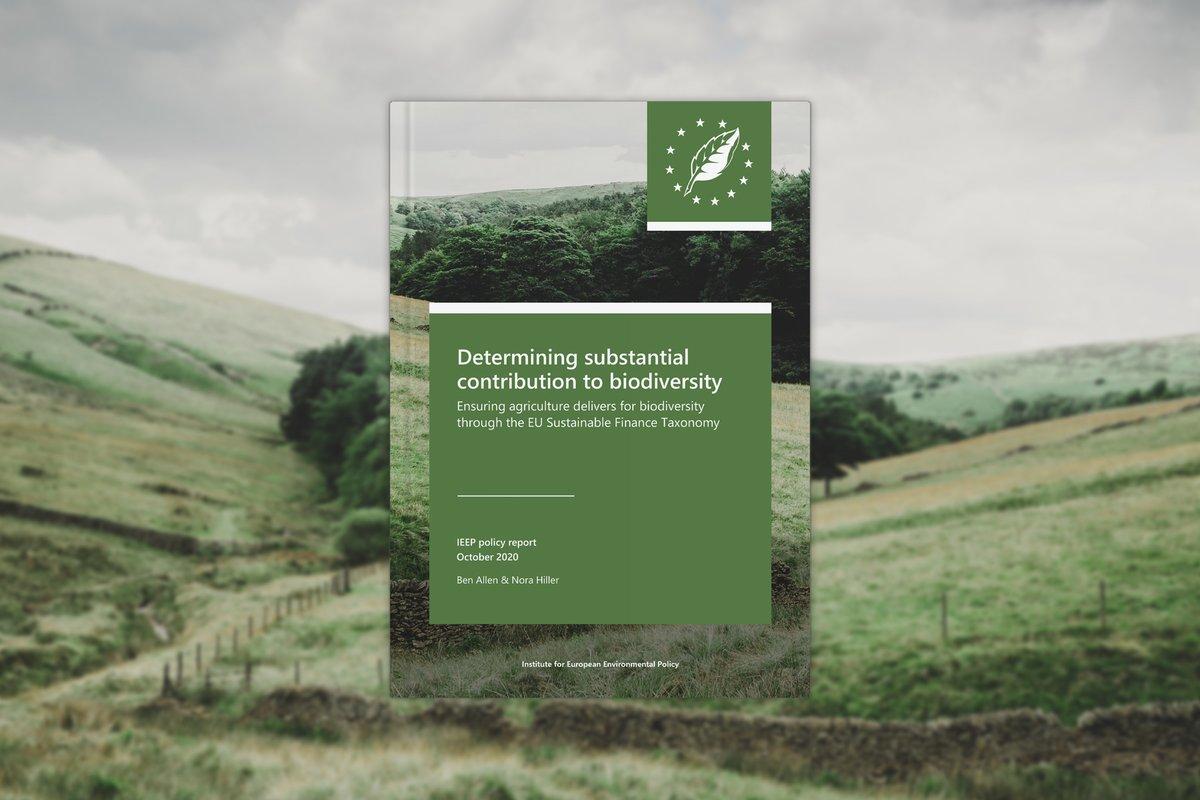AUTHORS: Ben Allen – Nora Hiller
This report provides input to the ongoing development of the EU Sustainable Finance Taxonomy. It sets out the biodiversity and ecosystem objectives to which substantial contribution is to be measured, suggests the agricultural economic sub-sectors from which these contributions should be sought, and proposes examples of how technical screening criteria should be developed to guide sustainable finance.
The EU Sustainable Finance Taxonomy will help investors, companies, issuers and project promoters navigate the transition to a low-carbon, resilient and resource-efficient economy. It will do this through the setting of performance thresholds by which investments will be judged to be green, or not. This report provides input to the ongoing development of the Taxonomy with a particular focus on the biodiversity and ecosystem objective.
Defining specific goals and objectives of the Taxonomy
The Taxonomy Regulation (Art. 15) lists the protection and restoration of biodiversity and ecosystems as an explicit target but lacks more granular detail that would enable specific and measurable criteria to be established. We recommend the following specific objectives from which to determine criteria and thresholds to deliver the headline objective:
Global framing objective: “To ensure that by 2050 all of the world’s ecosystems are restored, resilient, and adequately protected.”
For agro-biodiversity and ecosystems:
- The population of all naturally occurring species particularly bird and insect pollinators on agricultural land are maintained and enhanced.
- A sufficient diversity and area (no less than [20%] of farmed land) of habitats for wild species populations is preserved, maintained or re-established, allowing them to thrive within agricultural land.
- The genetic diversity of farmed species is increased
- Soil fertility and soil organic matter is protected and enhanced, and erosion reduced – achieving land degradation neutrality
- Invasive alien species are avoided or suitably and strictly contained
For wider biodiversity and ecosystems agricultural activities support the preservation, maintenance or re-establishment of habitats and species to favourable conservation status:
- The use of natural resources and ecosystems for agricultural activities is sustainable and within parameters defined for planetary boundaries not covered by other objectives of the Taxonomy, specifically – No additional (natural) land take for agricultural production;
- Point source and diffuse pollution from agriculture is eliminated
The NACE structure used in the Taxonomy leaves a significant gap in the context of biodiversity. NACE does not address those areas where substantial and significant biodiversity and ecosystem contributions can and are being made, but where no economic activity is taking place. These areas should have access to the protection of and be supported by investments made by private finance. These may include old-growth forest areas or other areas of (semi-)natural habitats, or significant economic activities that focus solely on the protection and restoration of biodiversity and ecosystems, or associated drivers (such as ecotourism). Our recommendation is that biodiversity and ecosystems that are subject to limited or no economic activities, should be enabled within the wider Taxonomy (if not specifically within agriculture).
Existing EU legislation can be used to demonstrate compliance with the Taxonomy criteria, once those criteria have been clearly defined. EU legislation is purposeful and thus those purposes should be clearly recognised wherever it is used to demonstrate compliance or inform the development of criteria. The EU environmental “aquis communautaire” can provide a good basis on which to develop technical screening criteria, but sectorial focussed policies, such as the Common Agricultural Policy or the recast Renewable Energy Directive, should not. These sectorial policies may have the potential to be used in demonstrating compliance with the Taxonomy criteria but should not be assumed to do so unless it can be clearly demonstrated. Full legal compliance should underpin any substantial contribution or DNSH criteria.
Technical screening criteria are one of the most important elements of the Taxonomy process as these are the criteria by which an investment will be judged to be sustainable under EU law. Measurement of progress towards these criteria should be evidence-based, rigorous and transparent. This requires a clear baseline for assessment to be established through competent national authority. Wherever possible direct measurement of the contribution made to the protection and restoration of biodiversity and ecosystems should be established as the primary means of determining compliance, before considering proxy indicators or assessments of progress (i.e. trajectory towards target).
Enabling activities in other sectors are important to support a sustainability transition in agriculture. One important example is the potential for the manufacturing sector to generate alternative plant proteins to enable diet shifts, as well as machinery or other inputs to production that can help implement substantial contribution activities within the agriculture sector.

